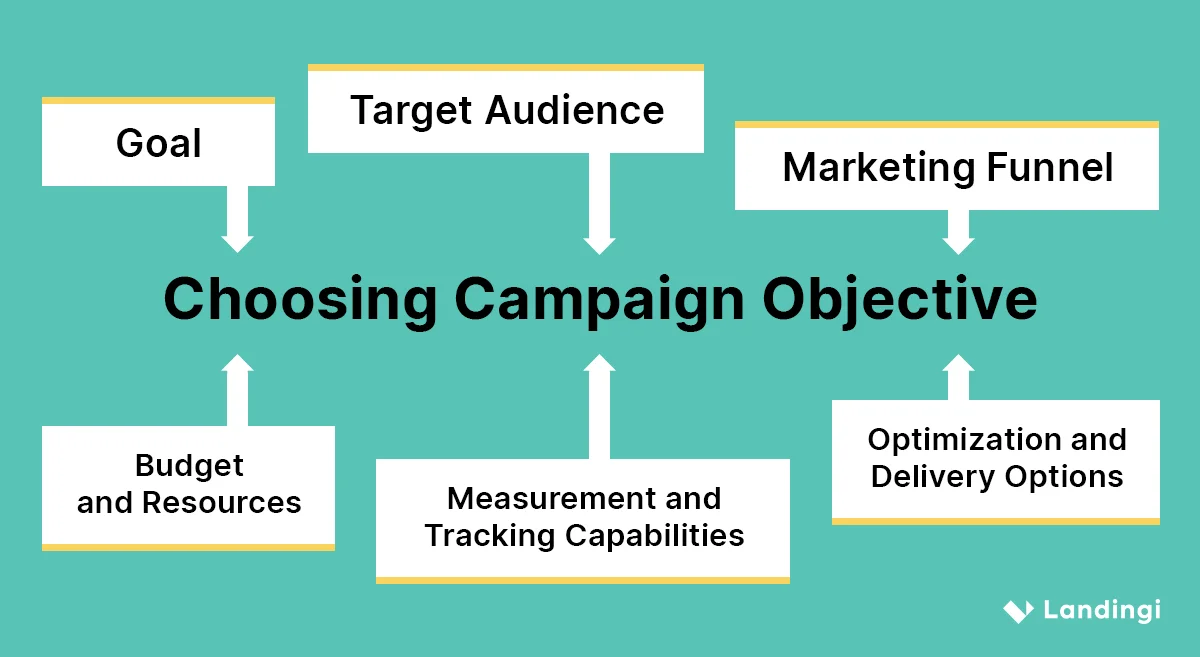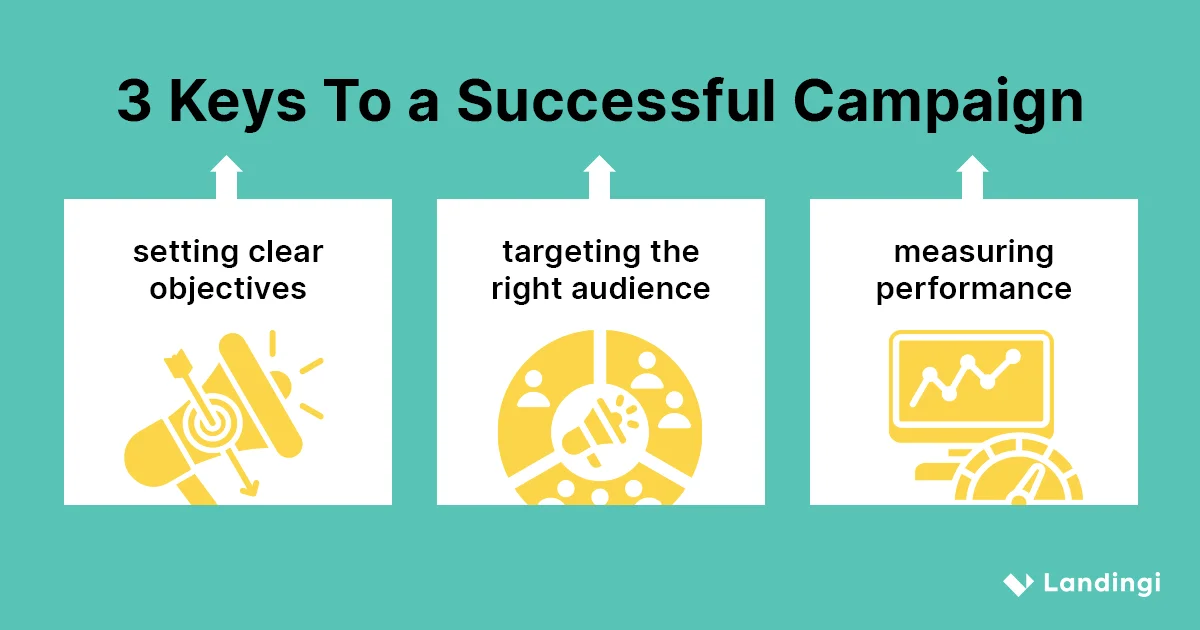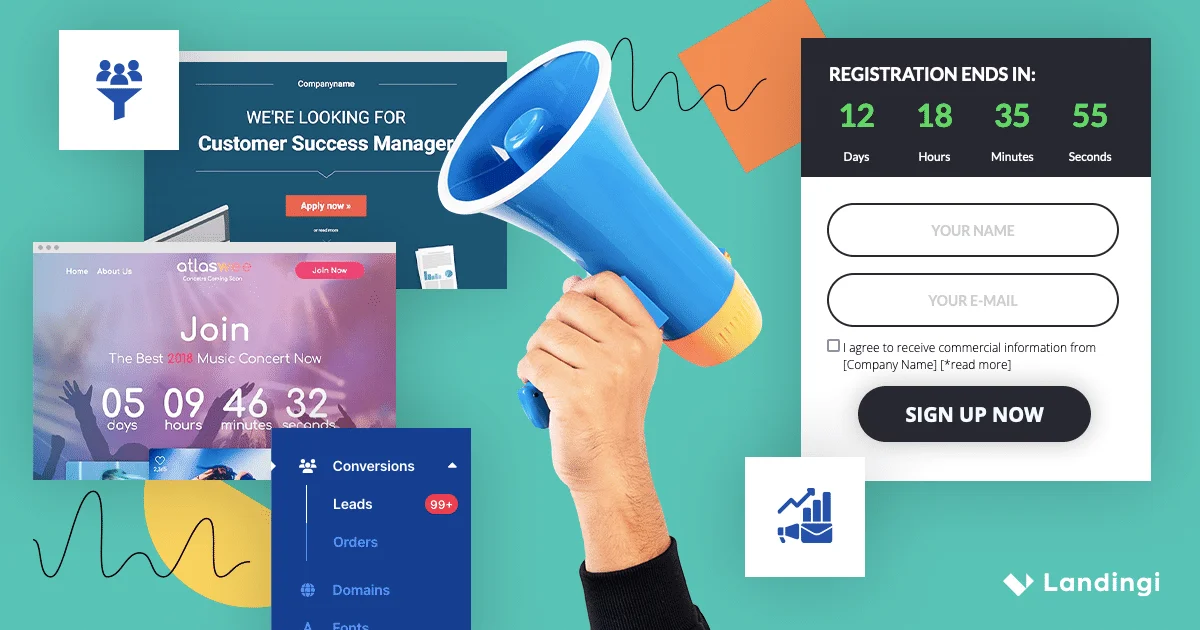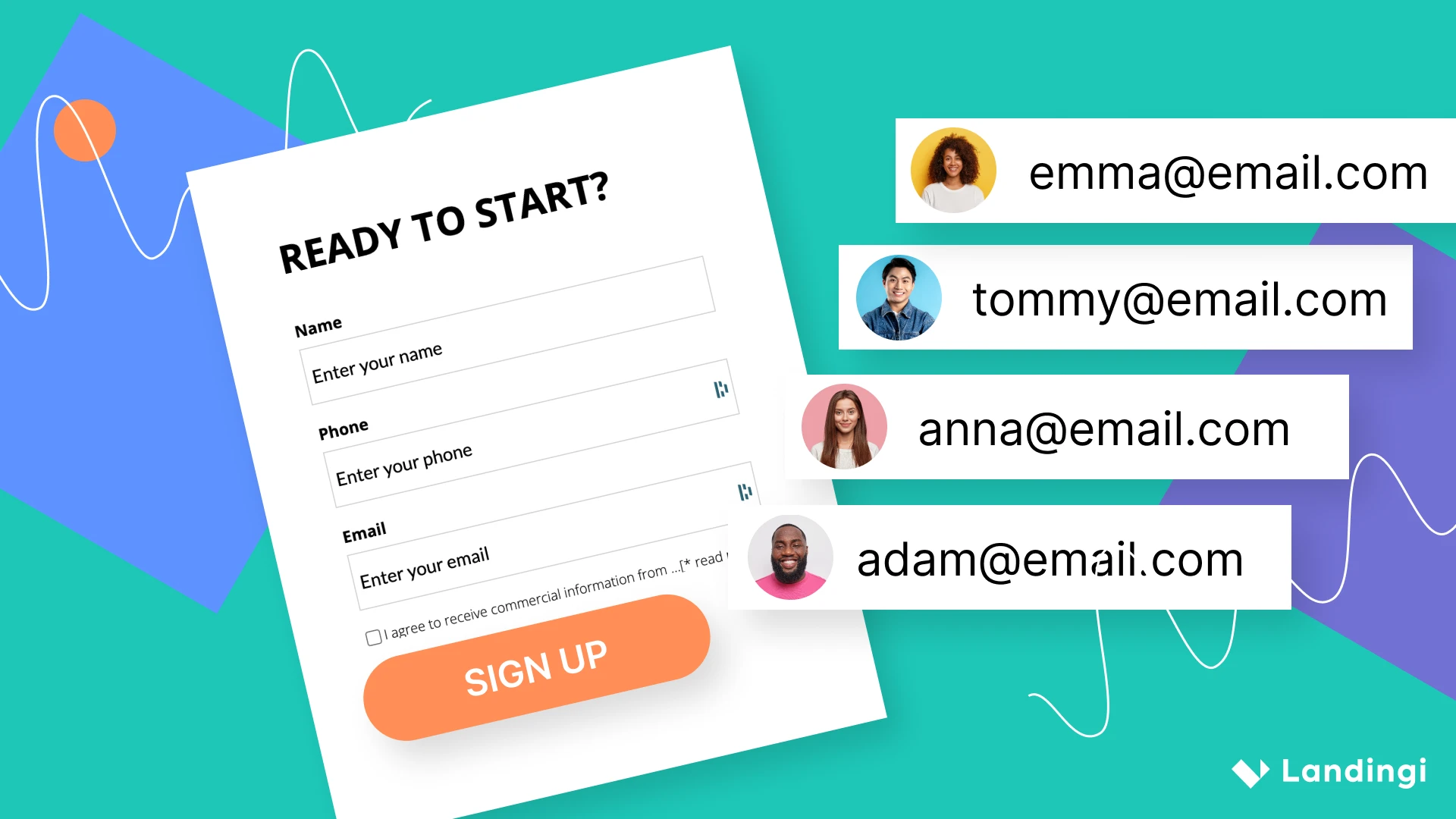Whether you’re a small business owner or a global marketing manager, understanding the various types of campaign objectives and their impact on your business is crucial for success. As Philip Kotler puts it, “Marketing objectives are essential for any organization that wants to raise awareness about itself, its products, or its services.” That’s why you can’t afford to be ignorant of the subject.
Today, we’ll explore the different types of campaign objectives, how they align with your overall business goals, and how to choose the best one for your specific needs.
Make your sections smartable and let go of mundane manual tasks with Smart Sections! An easy way to manage bulk changes.
What Is a Campaign Objective?
A campaign objective is the ultimate goal or desired outcome that you want to achieve with your campaign. It guides all your marketing efforts, providing a clear direction and purpose, and makes your actions focused and results-driven.
Chitranshi Srivastav, in the “Choose the Right Campaign Objective for Your Business and Spark Your Sales” article, describes objectives as assistance that helps “you in focusing on what you want to achieve with your marketing campaigns and keeping track of your ad’s performance over time.”
That said, whether you’re looking to boost brand awareness, generate leads, drive website traffic, or increase sales, the goal of the campaign is the key to shaping your advertising strategy and measuring its success. So, when we talk about a campaign objective, we’re talking about the foundation of your marketing campaign. It’s the cornerstone upon which all your advertising decisions are built – from audience targeting and ad design to budget allocation and performance tracking.
What are SMART campaign objectives?
SMART campaign objectives are Specific, Measurable, Attainable, Relevant, and Timely. It’s a framework that helps ensure a clear and focused approach to your strategy.
For example, if your goal is to increase sales, a SMART objective would be to “Increase sales by 15% within the next quarter by targeting a core demographic with Facebook Ads”.
The SMART framework allows for tracking progress and making necessary adjustments, which leads to successful campaigns.
What is a measurable objective in a campaign?
A measurable objective in a campaign is a quantifiable goal that can be tracked and evaluated, enabling progress to be monitored and alterations to be implemented as necessary.
For instance, if your campaign objective is to increase website traffic, a measurable objective could be “Increase website visits by 20% over the next two months”. This provides a clear, quantifiable target that can be tracked using analytics tools, allowing you to evaluate the effectiveness of your campaign and make necessary adjustments for improvement.
Failing to set measurable objectives can result in campaigns that lack direction and focus, ultimately wasting resources and hindering your ability to achieve your intended results.
Get 111 Landing Page Examples—The Ultimate Guide for FREE
What Should My Campaign Objective Be?
Choosing the right campaign objective depends on your business goals, target audience, and desired outcomes. For example, if your plan is to increase brand recognition, you may choose brand awareness or reach objective as your primary focus. On the other hand, if you want to generate more sales or leads, a conversion campaign might be more suitable.
It is essential to select the proper goal to meet your business points. An incorrect objective can lead to a disconnect between your campaign and your overall business goals, creating confusion within your team and your target audience. It’s like trying to sail a boat without a rudder – you may move, but not necessarily in the direction you want. Therefore, careful consideration and strategic planning are necessary when selecting your campaign objective to ensure it aligns with your broader marketing goals and serves as a guiding light for your marketing efforts.
Evaluating diverse campaign targets, like the brand awareness objective, post-engagement campaign objective, or traffic objective, can help identify the one most effective for your specific goals and audience.
What are the objectives of a successful campaign?
Successful campaign objectives are those that align with your overall business goals, target the right audience, and are measurable. They should also be flexible to adapt to changing market conditions and customer behaviors.
For example, in the tech industry, common objectives might include enhancing brand recognition, driving traffic to product launches, and generating high-quality leads for software demos. On the other hand, a healthcare organization might focus on objectives such as educating patients about new services, promoting preventative care measures, and boosting patient satisfaction scores. This focus is underlined by the fact that patient engagement is a significant concern in the healthcare industry, and the Patient Engagement Report by NEJM Catalyst reveals that 64% of healthcare leaders consider patient engagement a high priority.
A retail business might aim to increase foot traffic in stores, introduce new products, and boost sales during peak shopping seasons. For instance, they might launch a holiday-themed marketing campaign with special discounts and promotions to attract customers and stimulate purchases during the festive season. This strategy can significantly impact the results, as data from the National Retail Federation shows that holiday sales can account for up to 30% of annual sales for some retailers.
Meanwhile, a B2B company could focus on objectives like generating leads, nurturing relationships with existing clients, and increasing annual contract renewals. Lead generation is rated as the top-priority campaign objective by 80% of B2B marketers, as stated by the Content Marketing Institute.
By understanding your industry and the characteristics of your target audience, you can develop successful campaign objectives that drive tangible results and foster business growth.
How do you choose campaign objectives?
Choosing the right campaign objectives is about defining the destination for your marketing efforts, and just like in a real journey, the destination you choose will determine the route you take, the resources you need, and the time it takes to get there.
To choose the right marketing objectives, you need to consider the following factors:
- Your ultimate purpose: This is the end result you want to achieve with your marketing strategy. It could be increasing brand awareness, boosting sales, generating leads, or driving traffic to your website. Your campaign objective should be closely aligned with this purpose.
- Your target audience: Understanding who your target audience is crucial. You need to know their demographics, interests, behaviors, and preferences to tailor your marketing efforts effectively and achieve your goals.
- Your marketing funnel: This refers to the customer’s journey from awareness to conversion. Your marketing objectives should be designed to guide potential customers through this funnel, from generating initial interest and engagement to facilitating consideration and ultimately building loyalty.
- Your budget and resources: The resources available for your campaign, including your budget, staff, and time, will significantly influence your marketing objectives. You need to set targets that are realistic and achievable within your resource constraints.
- Your measurement and tracking capabilities: It’s essential to have systems in place to track the performance of your marketing campaigns. This will help you measure your objectives’ success and make necessary adjustments to optimize your efforts for maximum effectiveness.
- Your optimization and delivery options: These are strategies for reaching your target audience. This includes optimizing for conversions to show ads to those most likely to perform a desired action or optimizing for ad delivery to get the most value from your budget. You should choose when, where, and on which devices your ads are displayed.

Which campaign objective is best?
The best objective for your campaign is one that aligns perfectly with your specific goals and target audience. Understanding that what works best for one business might not necessarily be the best for another is crucial.
By testing different objectives and analyzing the data and metrics, you can determine which objective is achieving the desired results, resonates best with your target audience, drives the highest engagement, and delivers the desired conversions or outcomes.
Remember, it’s all about finding the perfect balance that will help your business thrive in the competitive marketplace.
Why Are Campaign Objectives Important?
Campaign objectives are crucial because they guide your ad targeting, optimization, and help measure the success of your advertising efforts. Without well-defined objectives, it can be difficult to monitor the progress of your campaign, make necessary adjustments, and ultimately achieve the desired results.
As highlighted by Smith and Taylor in their book “Marketing Communications: An Integrated Approach” (2004), setting clear and measurable campaign objectives is a fundamental step in the development of successful marketing strategies. In essence, campaign objectives are vital to amplify the impact and effectiveness of your advertising efforts.
Take a closer look at a couple of stats that show the importance of setting campaign objectives:
- According to Nathan Ellering’s study, (“The Strongest Predictors of Marketing Success: A Massive Survey of 1,597 Marketers With Jordan Loftis From CoSchedule”), marketers who set goals are 429% more likely to report success than those who don’t, and 81% of those successful, goal-setting marketers achieve them.
- A report, “How to Develop a Content Strategy”, written by Jodi Harris for the Content Marketing Institute, found that 65% of the most successful content marketers have a documented strategy, including campaign objectives, and 68% of marketers say it helps their team allocate resources to optimize intended results.
What Are The 3 Keys To a Successful Campaign?
The three keys to a successful campaign are setting clear objectives, targeting the right audience, and measuring performance.
To elaborate, setting clear objectives involves identifying what you want to achieve with your campaign, whether it’s increasing store traffic, generating leads, or boosting sales. Clear objectives provide a roadmap for your campaign, guiding all your marketing efforts toward a specific goal.
Targeting the right audience is the second key to campaign success. This involves identifying your potential customers and understanding their needs, preferences, and behaviors. By targeting the right audience, you can tailor your campaign to resonate with the people most likely to be interested in your product or service, thereby maximizing the impact of your advertising efforts.
The third key to an efficient campaign is measuring its performance. It’s about tracking key metrics and analyzing data to assess the effectiveness of your campaign. By measuring performance, you can identify what’s working and what’s not, and make data-driven decisions to optimize your campaign for maximum success.

1. Awareness Objectives
Awareness objectives focus on increasing brand familiarity and reaching as many people as possible within your target audience. These objectives aim to raise awareness of your product or service, making a lasting impression on your audience members that will ultimately influence their decision-making process when considering making a purchase.
To create successful awareness campaigns:
- write engaging content that tells your brand story,
- utilize video content to showcase your products or services,
- run a promotional campaign to encourage people to visit your website or store,
- or initiate traffic campaigns to drive more visitors to your online platforms.
Focusing on awareness campaigns and objectives lays a strong foundation for marketing efforts and fosters lasting relationships with the target audience.
2. Consideration Objectives
Consideration objectives aim to get people to increase interactions, drive website traffic, and generate leads or app installs. These goals are designed to engage your audience and encourage them to take the next step in their customer journey, whether that’s signing up for your newsletter, downloading your app, or requesting a quote.
Utilizing landing pages can significantly aid this process. Landing page platforms, like Landingi, allow you to design engaging and conversion-optimized landing pages, making it easier to achieve your consideration objectives.
Some examples of consideration objectives include:
- The traffic objective that aims to drive more visits to a website or landing page.
- The engagement objective that aims to increase interactions such as likes, shares, and comments.
- The lead generation objective that aims to collect potential customer data for sales follow-ups.
By focusing on a consideration objective, you can nurture your potential clients, guiding them towards making a purchase or taking a desired action.
3. Conversion Objectives
Conversion objectives focus on driving sales or encouraging store visits. They aim to motivate individuals to take beneficial actions on your website or app, such as registering for an event, adding an item to the cart, or making a purchase.
To achieve a conversion campaign objective, you might implement targeted conversion ads, offer incentives or discounts, or utilize retargeting strategies to remind potential customers about products they have previously viewed.
Specific examples of conversion objectives include the following:
- Conversion campaigns that aim to drive purchases or specific actions on a website.
- Store visit campaigns that encourage people to visit a physical store.
- Catalog sales ad campaigns that promote products from an e-commerce catalog to generate sales.
Focusing on conversion campaigns yields tangible results and directly impacts your business’s bottom line.
4. Retention Objectives
Retention objectives aim to encourage repeat purchases or actions and reactivate inactive customers. These objectives focus on building customer loyalty and maintaining long-term relationships with your audience.
By targeting your existing customers with personalized offers, tailored content, or exclusive promotions, you can enhance their overall experience with your brand and motivate them to continue engaging with your business.
Examples of retention objectives may include the following:
- Personalized email campaigns to re-engage customers who have not interacted with your brand for a while.
- Re-engagement ads used to highlight new products, special offers, or the benefits of staying engaged with your brand.
- Customer surveys to gather feedback from customers, identify areas of improvement, and show customers that you value their opinions.
- Loyalty programs to reward customers for their continued patronage, encouraging them to make repeat purchases.
- Inviting customers to exclusive events or sales – it can make them feel valued and encourage them to continue supporting your brand.
5. Advocacy Objectives
Advocacy objectives focus on encouraging satisfied customers to refer others and leave positive reviews or ratings. These objectives aim to leverage the power of word-of-mouth marketing and social proof to build trust and credibility for your brand.
By incentivizing your loyal customers to share their positive experiences with your business, you can get people to expand your reach and attract new customers who are more likely to trust the recommendations of their friends, family, or peers.
A campaign objective for building advocacy can be:
- to encourage existing satisfied customers to share their positive experiences with your brand on social media platforms,
- to stimulate customers to write positive reviews or testimonials about your products or services, which can be quoted on your website or other marketing channels,
- to initiate a referral program, where customers are incentivized to refer your brand to their friends and family,
- to create a loyalty program that rewards customers for their continued patronage and support,
- to organize customer appreciation events or campaigns to celebrate and acknowledge your customers’ contributions to your brand’s success.
6. Educational Objectives
Educational objectives involve promoting informative content and encouraging registrations for webinars or workshops. These objectives aim to position your brand as an industry expert and thought leader, providing valuable information and resources to your audience.
By sharing your knowledge and expertise through educational content, you can build trust and credibility with your audience, ultimately driving conversions and brand loyalty.
The campaign with an education objective may consist of the following:
- webinars and workshops,
- informative blog posts,
- e-books and whitepapers,
- tutorial videos,
- infographics,
- email newsletters,
- informative social media posts.
7. Community Building Objectives
Community building objectives focus on increasing social media followers and encouraging users to join specific groups or communities. They foster a sense of belonging and connection among your audience, ultimately driving engagement and loyalty.
By creating a dedicated space for your customers to connect and share their experiences, you can strengthen your brand’s presence and encourage advocacy.
The following elements may be included in a campaign with a community building objective:
- Creating and promoting online communities or groups (on social media platforms, forums, or your own website).
- Organizing events or challenges (webinars, Q&A sessions, contests, local meetups).
- Sharing user-generated content (photos of them using your products, their own reviews, or even creative works inspired by your brand).
- Engaging with your community regularly (responding to comments, asking for feedback, posting regular updates).
How do campaign objectives align with overall business goals?
Campaign objectives align with overall business goals by guiding the direction of marketing strategies to achieve desired business outcomes. They provide a roadmap for marketing efforts, ensuring they are focused on achieving specific, measurable results that contribute to the success of the business.
How do campaign objectives vary across industries?
Campaign objectives differ across industries based on their specific goals, target audience, and desired outcomes. For instance, a tech company might focus on increasing brand awareness and generating leads, while a healthcare organization may aim to educate patients and promote services.
What tools can help track and measure the success of campaign objectives?
There are several tools that can help track and measure the success of campaign objectives. These include Google Analytics, Facebook Ads Manager, and other analytics platforms. These tools provide valuable insights into your campaign performance, allowing you to monitor key metrics and optimize your strategy.
How often should campaign objectives be reviewed and adjusted?
Campaign objectives should be reviewed and adjusted regularly, ideally every quarter (at minimum), to ensure they are still aligned with business goals and are effectively driving desired outcomes.
What are the common pitfalls to avoid when setting campaign objectives?
The common pitfalls to avoid when setting campaign objectives include setting unrealistic goals, not aligning them with overall business goals, and failing to track and measure their performance.
How do external factors (like market conditions or global events) influence campaign objectives?
External factors such as market conditions or global events can significantly influence campaign objectives. They can shift consumer behavior and market trends, necessitating adjustments in campaign objectives to stay relevant and effective.
Can a campaign have secondary or tertiary objectives?
A campaign can have secondary or tertiary objectives, but it’s important to prioritize and focus on the primary objective for optimal results. Secondary objectives are additional goals that support or enhance the achievement of the primary objective, while tertiary objectives encompass other desired outcomes that may not directly contribute to the primary objective but still hold value for your business.
What role does audience targeting play in defining campaign objectives?
Audience targeting is pivotal in defining campaign objectives as it ensures your marketing efforts reach the most relevant individuals. Understanding your target audience’s characteristics and preferences allows you to set objectives that effectively engage and convert potential customers. With this, you can create more personalized and targeted marketing campaigns, maximizing the impact of your advertising efforts and driving long-term success.
How do budget considerations impact campaign objectives?
Budget considerations directly impact campaign objectives by determining the scale and reach of your advertising efforts. A limited budget may require prioritization of certain objectives and adjustments to the campaign’s scope. Budget constraints can also influence the choice of objectives based on available resources for advertising and promotional activities.
What are Facebook Ads campaign objectives?
Facebook ad objectives are the goals you set for your advertising campaigns on Facebook. They guide the platform’s ad delivery algorithm to achieve your desired outcomes. Facebook offers 6 campaign objectives, such as Awareness, Traffic, Engagement, Leads, App Promotion, and Sales, each with specific goals aligned with the stages of the marketing funnel.
Implement Campaign Objectives On Landing Pages
Effectively integrating campaign objectives into landing pages ensures that each page is meticulously tailored to meet specific goals, whether it’s increasing sign-ups, driving sales, or enhancing brand awareness. By aligning the design, content, and calls-to-action of landing pages with the overarching campaign objectives, marketers can significantly boost conversion rates and achieve targeted outcomes more efficiently.
By utilizing Landingi’s user-friendly landing page builder, marketers can easily create and customize landing pages that are visually appealing and strategically aligned with their campaign objectives. This enhances the overall effectiveness of their marketing efforts. Landingi’s platform takes it a step further by offering a mobile page editor, an intuitive form builder, and a variety of templates. These features are seamlessly integrated to ensure that each landing page is engaging and optimized for every device, complementing and extending the strategic alignment mentioned previously.








